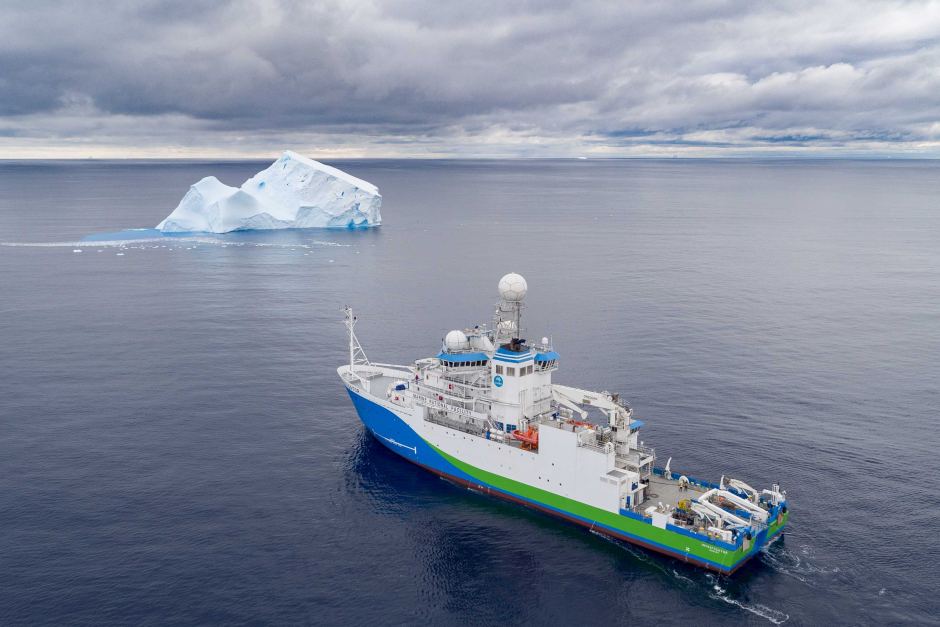Getting the measure of krill
MEDIA RELEASE
28 January 2020
Australian Antarctic Program scientists will use a range of novel technologies to measure krill, during a ground-breaking voyage to the Southern Ocean that departs tomorrow.

Over the next two months the team on Research Vessel (RV) Investigator, operated by Australia’s science agency CSIRO, will use specially designed camera technologies, for the first time, to study krill and their environment; along with acoustics, trawls, predator observations, oceanography and genetics.
Voyage Chief Scientist, Dr So Kawaguchi, from the Australian Antarctic Division, said the team would determine how much krill (their ‘biomass’) live in waters off Mawson research station in East Antarctica, to ensure the sustainable development of a krill fishery in the region.
“Understanding the environment in which the krill live, and how it is changing, is key to understanding how krill biomass could be affected in the future,” Dr Kawaguchi said.
“So we want to understand how krill are distributed in relation to predators like whales and seabirds, ocean currents, food sources, sea floor habitat, and other krill swarms.”
“This will ensure we have a good management system in place before the krill fishery establishes.”
The workhorse of the voyage will be the ship’s echosounders, which send out ‘pings’ of sound to find and measure the biomass of krill swarms in the top 350 metres of water.
Trawls and scientific nets will be used to confirm that the swarms are Antarctic krill and to collect live krill for measurements.
Australian Antarctic Division krill biologist, Rob King, said that for the first time, the voyage would also aim to understand the importance of deep sea habitat to krill, using novel deep sea moorings called ‘KOMBIs’ (‘Krill Observational Mooring for Benthic Investigation’).
Three KOMBIs will be anchored to the sea floor between 350 and 1500 metres deep. Their sideways looking video camera and lights will video the sea floor for three to five minutes, every five hours, over a year.
“There have been over 40 different occurrences now where krill have been recorded on the sea floor, up to 3500 metres deep, but we just don’t know how important that sea floor habitat is for them,” Mr King said.
“If we’re estimating biomass with echosounders on the surface, how much of the krill population might we be missing on the sea floor?”
“We’ve never really had a way to understand that until now, so it will be exciting to see what we discover.”
Mr King will also deploy a novel ‘swarm study system’ – a series of cameras mounted to a floating frame – to film the krill schooling around it in 3D.
“We’ll drop the system into the middle of a krill swarm as the ship moves over it,” Mr King said.
“This will give us an idea of how krill orient themselves in a swarm, which will help improve biomass estimates from the echosounders, as vertically or obliquely oriented krill will reflect sound differently to horizontally oriented krill.”
The voyage will undertake six survey lines or ‘transects’ across more than 793,100 square kilometres, and a fine scale ‘krill box’ survey, just off the Mawson coast.
At the end of the voyage scientists will provide a krill biomass estimate to the Commission for the Conservation of Antarctic Marine Living Resources (CCAMLR) to allow them to set a precautionary catch limit for the region.
“This region was last fished for krill between 1975 and 1995, but since then krill fishing has been concentrated around the Antarctic Peninsula,” Dr Kawaguchi said.
“The current precautionary catch limit off the Mawson coast is based on biomass surveys we conducted in 2006, so we’ll provide an up-to-date estimate before the krill fishery returns, as well as a broader understanding of the environment in which krill live and the species they support.”
This voyage is supported by the Australian Antarctic Division, Pew, Australian Antarctic Program Partnership and the Antarctic Science Foundation, and by a grant of sea time on RV Investigator from the CSIRO Marine National Facility.



